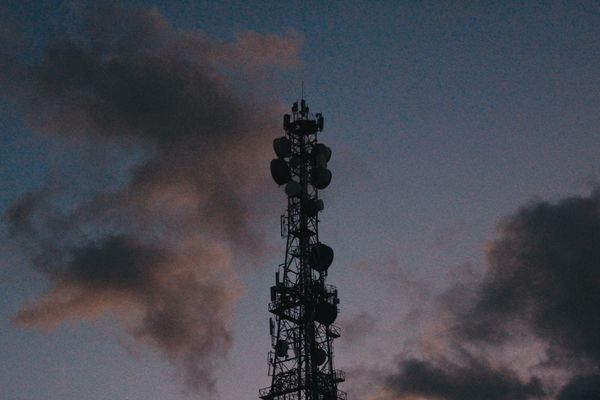A Comprehensive Guide to Digital Mobile Radio (DMR) and Two-Way Radio Systems

A Comprehensive Guide to Digital Mobile Radio (DMR) and Two-Way Radio Systems
Digital Mobile Radio (DMR) has revolutionized the way organizations communicate since its development by the European Telecommunications Standards Institute (ETSI) in 2005. As businesses and public safety organizations seek reliable communication solutions, understanding two-way radio technology becomes increasingly important.
This comprehensive guide explores the world of two-way radios, including DMR, UHF, VHF, and trunked radio systems, helping you understand their applications and benefits.
Estimated Reading Time: 8 minutes
Key Takeaways
- Understanding the different types and functionalities of two-way radios.
- Comparing traditional analog systems to modern Digital Mobile Radio (DMR) technology.
- Exploring various radio communication systems like UHF, VHF, and trunked networks.
- Learning how to choose the right system depending on specific industry needs and environments.
Table of Contents
Understanding Two-Way Radios
Two-way radios are communication devices designed for both transmitting and receiving voice messages. These devices operate using push-to-talk (PTT) functionality, allowing users to switch between transmission and reception modes.
Key features include:
- Simplex communication (one direction at a time)
- Duplex communication (simultaneous two-way communication)
- Direct device-to-device communication
- Range varying from several hundred feet to many miles
The effectiveness of these devices depends largely on choosing the right type for your specific needs and environment.
Types of Two-Way Radios
Digital Mobile Radio (DMR)
DMR represents the cutting edge of two-way radio technology, offering superior features and performance. Learn more here.
This digital standard provides:
- Enhanced voice clarity with noise reduction
- Improved spectrum efficiency through TDMA technology
- Extended battery life
- Advanced features like text messaging and GPS tracking
- Better coverage in challenging environments
DMR has become the preferred choice for industries requiring reliable, feature-rich communication solutions. More details.
UHF Two-Way Radios
Operating between 300 MHz and 3 GHz, UHF radios excel in urban and indoor environments. Benefits include:
- Superior penetration through walls and buildings
- Compact design with shorter antennas
- Ideal for retail, healthcare, and hospitality settings
- Excellent performance in confined spaces
These radios prove particularly effective in environments with numerous physical obstacles. Check it out.
VHF Two-Way Radios
Operating in the 30-300 MHz range, VHF radios offer:
- Enhanced range in open areas
- Superior performance in outdoor environments
- Excellent propagation over water
- Ideal for agriculture and marine applications
VHF radios remain the top choice for outdoor operations requiring extended range. More insights.
Trunked Radio Systems
These sophisticated systems utilize computer-controlled repeaters to manage frequency allocation efficiently. Features include:
- Automated channel assignment
- Support for large user groups
- Priority calling capabilities
- Enhanced frequency efficiency
- Advanced fleet management options
Trunked systems serve large organizations requiring complex communication management. Explore further.
Portable vs. Mobile Radios
Portable Radios
Handheld units offering:
- Complete mobility
- Battery-powered operation
- Lightweight design
- Optional hands-free operation
- Various carrying accessories
Mobile Radios
Vehicle-mounted or fixed-location units providing: Learn more.
- Higher power output
- Extended range
- Larger displays
- Constant power supply
- Enhanced feature sets
Comparison Factors:
- Range requirements
- Power needs
- User mobility
- Environmental conditions
- Installation requirements
Comparative Analysis
Each radio type offers distinct advantages:
- DMR excels in voice quality and features
- UHF provides superior indoor performance
- VHF delivers excellent outdoor range
- Trunked systems offer advanced fleet management
Consider interoperability requirements when selecting between systems, as not all types are compatible with each other.
Applications of Two-Way Radios
Industry-Specific Uses:
- Public Safety: DMR and trunked systems for emergency services
- Construction: UHF radios for site communication
- Agriculture: VHF radios for field operations
- Transportation: Mobile radios for fleet management
- Hospitality: UHF portable radios for staff coordination
Choosing the Right Two-Way Radio
Consider these factors:
- Operating environment
- Required range
- Number of users
- Feature requirements
- Budget constraints
- Future scalability needs
Emerging trends include:
- Smartphone integration
- IoT connectivity
- Enhanced data capabilities
- Improved battery technology
- Advanced security features
Conclusion
The world of two-way radio communication offers diverse solutions for various needs. From DMR’s advanced features to the specific advantages of UHF, VHF, and trunked systems, understanding these options helps organizations make informed decisions about their communication requirements.
Additional Resources
- Industry standards: ETSI DMR Standards
- Technical specifications: FCC Regulations
- Product guides: Manufacturer websites
- Expert consultation: Local radio dealers
- Training resources: Industry associations
This comprehensive overview helps you navigate the complex world of two-way radio communications, ensuring you select the right solution for your specific needs.